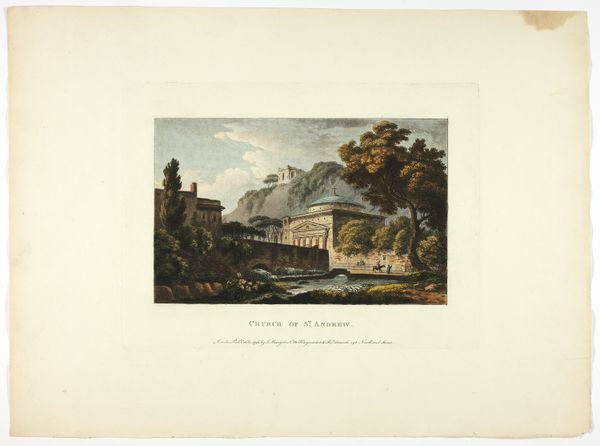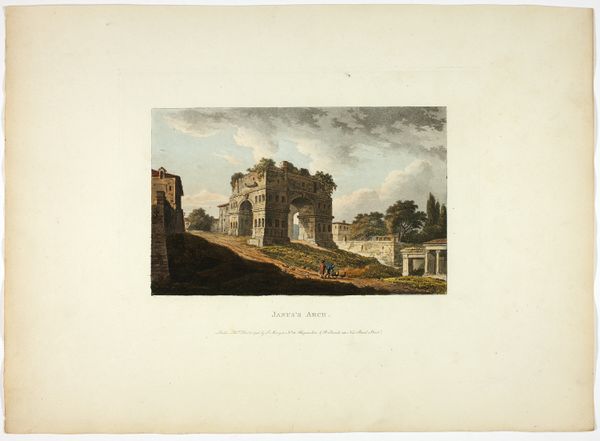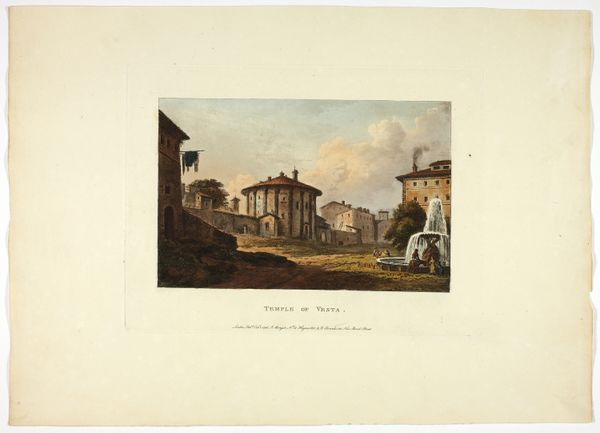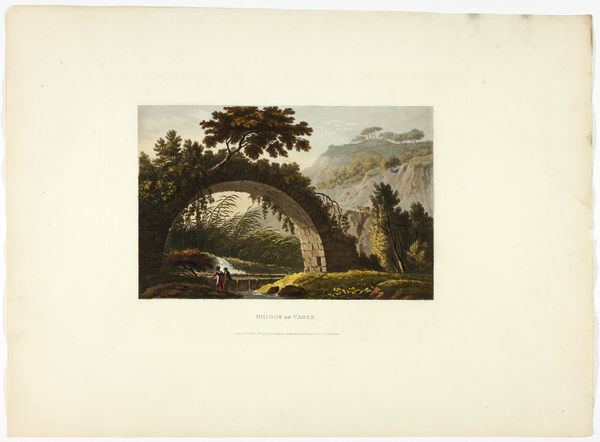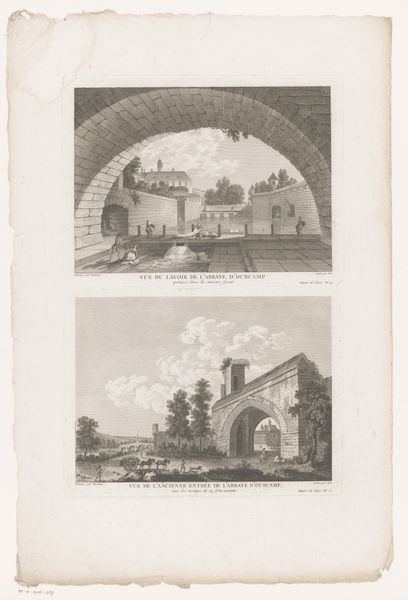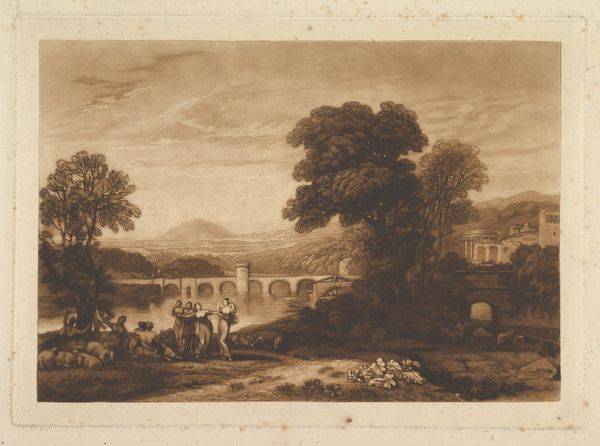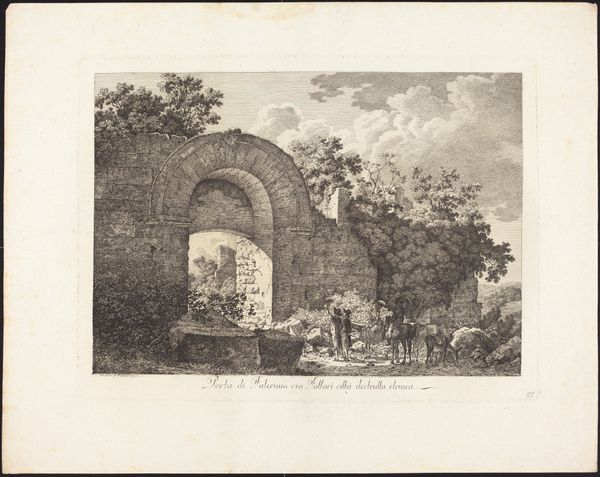
Temple of the Sun & Moon, plate two from Ruins of Rome c. 1796
0:00
0:00
drawing, print, etching, paper, watercolor
#
drawing
#
neoclacissism
# print
#
etching
#
landscape
#
paper
#
watercolor
#
coloured pencil
#
cityscape
#
history-painting
Dimensions: 330 × 448 mm (sheet)
Copyright: Public Domain
Curator: Looking at this, I’m immediately struck by a sense of quiet grandeur and the melancholic charm of faded glory. Editor: Indeed. What you are observing is "Temple of the Sun & Moon, plate two from Ruins of Rome" created circa 1796 by M. Dubourg. It's an etching with watercolor on paper, currently held here at the Art Institute of Chicago. What do you think is at work here? Curator: Well, firstly, there's the juxtaposition of human figures against the imposing ruins. They look so small, almost insignificant, compared to the vastness and historical weight of these structures. There's an obvious contrast, too, of nature reclaiming what was once meticulously constructed and revered, which resonates today with themes of environmentalism and colonial aftermath. What power structures facilitated and benefited from those meticulous constructions? Where did those structures source materials and labour from? Editor: It’s interesting you bring up the notion of labor and construction. In Dubourg’s time, there was a flourishing interest in antiquarianism. Travel became part of aristocratic education, and viewing these ruins was a symbol of one's cultured identity and understanding of the lineage of power. The scale, of course, reinforces this idea. It's about visualizing a grand past. The crumbling, overgrown temples aren't just picturesque; they’re evidence of history and its impact on the present social structures, legitimizing it as divinely chosen and ordained. Curator: And that act of recording becomes, in itself, a political one. Consider the power dynamic inherent in Europeans "discovering" and documenting these ruins. How much of the story is being told from a Eurocentric, arguably colonialist, perspective? And isn't there a risk of romanticizing the aesthetics of decline, while erasing or obscuring the real-world impacts on the local populations whose land these ruins occupy? I would question that assumption of inevitable power. Editor: A point well taken. There's a certain detachment in this depiction, as well, wouldn't you say? Dubourg captures the physical decline, the literal ruins. However, he doesn’t truly grapple with the political implications that ripple outward from that physical demise, for example, local governance or access to material resources. Curator: Precisely. It is vital to ask what histories remain unacknowledged, unheard, in the framing of narratives such as these? Editor: This engraving really urges us to reflect critically on the layered and subjective nature of history and how it can influence both the present and future. Curator: Absolutely. Thinking about art through multiple lenses is, ultimately, a tool for empathy and understanding.
Comments
No comments
Be the first to comment and join the conversation on the ultimate creative platform.
